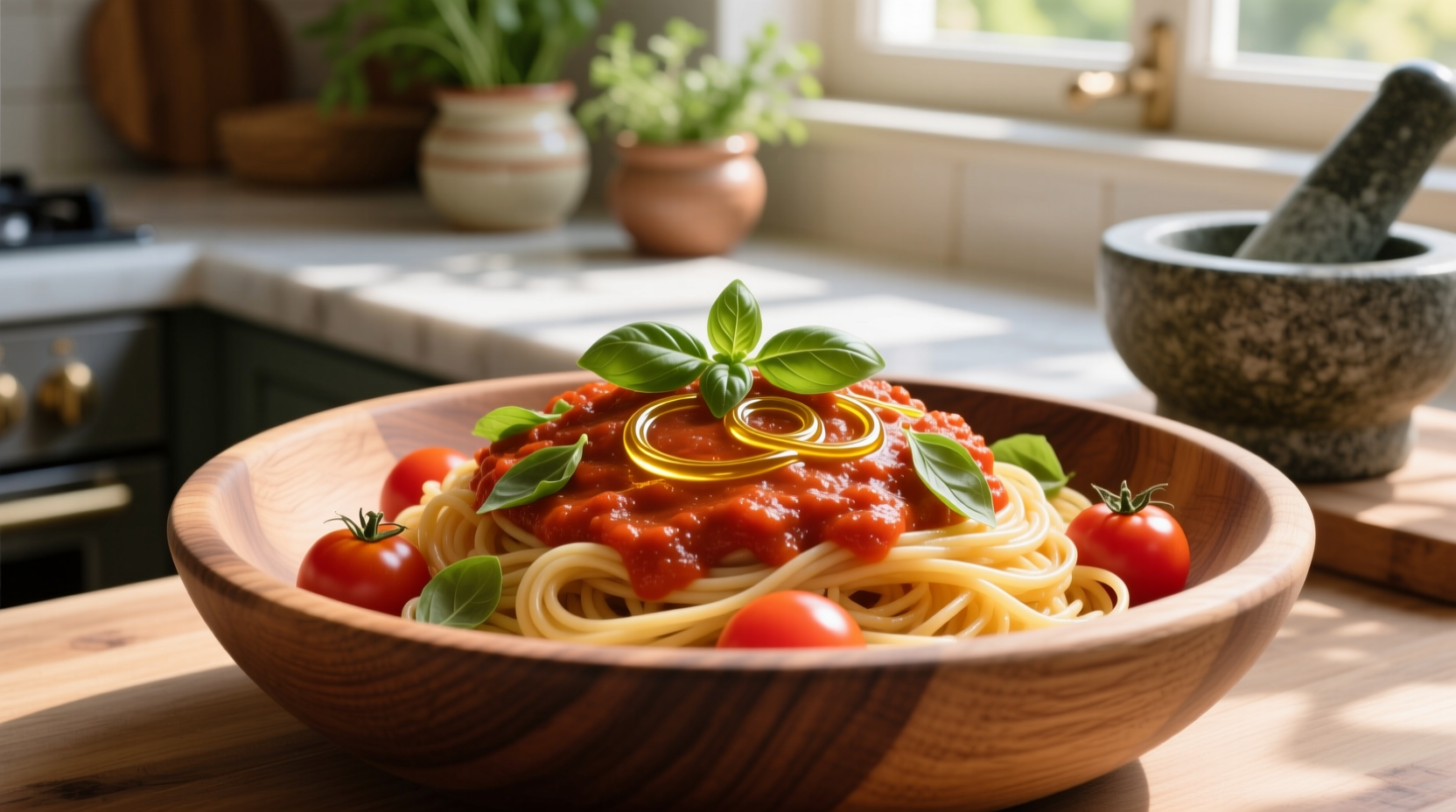Why Choose Tomato-Free Pasta Sauce?
Traditional tomato-based sauces cause discomfort for millions with dietary restrictions. Approximately 20% of Americans experience acid sensitivity, while nightshade vegetables like tomatoes trigger inflammation in 5-10% of people with autoimmune conditions according to American College of Rheumatology research. Tomato-free alternatives aren't just substitutes—they're culinary opportunities to explore deeper flavors and improve digestive comfort.
Your Tomato-Free Sauce Options Compared
| Sauce Type | Best For | Prep Time | Nutrition Highlights |
|---|---|---|---|
| Roasted Red Pepper | Nightshade-sensitive diets | 25 minutes | High vitamin C, no acidity |
| Butternut Squash | Creamy texture lovers | 35 minutes | Beta-carotene rich, naturally sweet |
| Classic Pesto | Quick weeknight meals | 10 minutes | Healthy fats, no cooking required |
| White Bean | High-protein needs | 20 minutes | Fiber-rich, budget-friendly |
Mastering Flavor Without Tomatoes
Creating satisfying tomato-free pasta sauce requires understanding flavor architecture. Professional chefs compensate for missing acidity through three key techniques:
Building Flavor Foundations
Start with aromatic bases like caramelized onions, roasted garlic, or shallots. The Maillard reaction during cooking creates complex flavor compounds that mimic tomato's depth. For nightshade-free options, use roasted carrots or celery root as your flavor base—these vegetables contain natural glutamates that enhance umami perception.
Texture Matters Most
Without tomatoes' natural pectin, achieving proper sauce consistency requires strategic thickening. Blend cooked cauliflower or white beans for creaminess without dairy. For oil-based sauces, emulsify slowly by incorporating pasta water gradually—this technique creates the velvety texture professional Roman restaurants achieve in authentic aglio e olio.
Balancing Brightness Naturally
Replace tomatoes' acidity with citrus zest, capers, or lemon juice added at the end of cooking. Monash University's low-FODMAP research confirms that small amounts of these ingredients provide brightness without triggering digestive issues. Start with 1 teaspoon per quart of sauce and adjust to taste.

Diet-Specific Sauce Solutions
Different dietary needs require tailored approaches. Understanding these context boundaries ensures your sauce meets specific health requirements while delivering authentic flavor.
Nightshade Sensitivity Protocol
For those avoiding nightshades (tomatoes, peppers, eggplant), roasted red pepper sauce requires modification. Use yellow carrots and sweet potatoes instead—they provide similar color and sweetness without nightshade compounds. The National Institutes of Health confirms these alternatives maintain comparable nutrient density while being nightshade-safe.
Low-FODMAP Adaptation
Traditional garlic and onion bases trigger IBS symptoms for many. Instead, infuse olive oil with garlic scapes or use the green parts of spring onions (allowed in Monash University's low-FODMAP guidelines). For cream sauces, substitute regular milk with lactose-free alternatives to maintain richness without digestive discomfort.
Pasta Pairing Principles
Matching sauce to pasta shape transforms your meal. Follow these chef-tested pairings:
- Ribbed pastas (rigatoni, penne): Trap chunky vegetable sauces
- Long noodles (spaghetti, linguine): Best with oil-based sauces
- Stuffed pastas (ravioli, tortellini): Pair with smooth, creamy sauces
- Short shapes (farfalle, rotini): Ideal for pesto and bean-based sauces
Troubleshooting Common Issues
Even experienced cooks encounter sauce problems. Fix these common issues:
Sauce Too Bland?
Add depth with nutritional yeast (½ teaspoon per cup) or mushroom powder. These ingredients provide umami without nightshades. A splash of high-quality balsamic vinegar (1 teaspoon per quart) adds complexity for those without acid sensitivity.
Sauce Separating?
Emulsification failure happens when fat and liquid components don't bind. Fix by slowly whisking in reserved pasta water while off heat. The starches in pasta water create a stable emulsion—this professional technique works for both dairy and oil-based sauces.
Storage and Reheating Guide
Tomato-free sauces often contain more delicate ingredients. Store in airtight containers for up to 4 days. When reheating, add a splash of water and warm gradually over low heat to prevent separation. Freeze portions in ice cube trays for single-serving convenience.
Expand Your Culinary Horizons
Exploring tomato-free pasta sauces opens new flavor dimensions beyond traditional Italian cooking. Mediterranean-inspired sauces with olives and artichokes, Asian-fusion options with miso and ginger, or North African harissa variations all work beautifully without tomato bases. The key is understanding flavor balancing principles rather than following rigid recipes.











 浙公网安备
33010002000092号
浙公网安备
33010002000092号 浙B2-20120091-4
浙B2-20120091-4